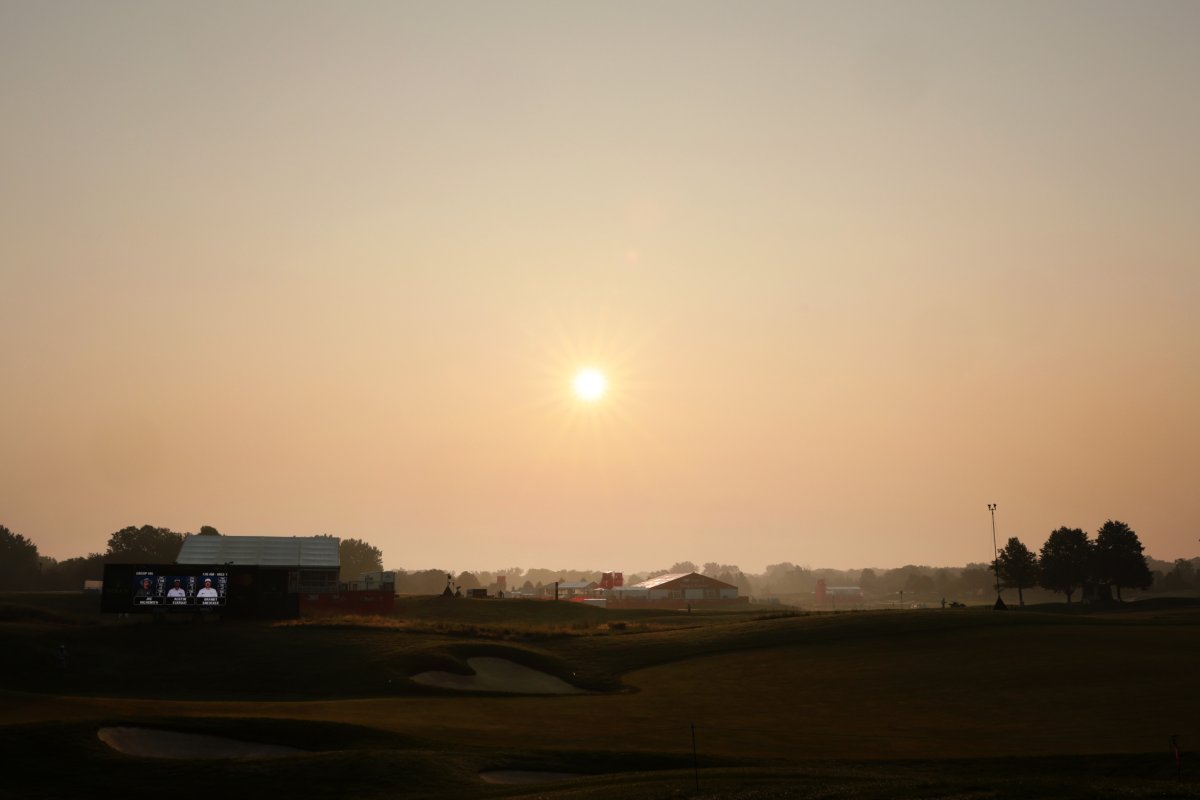An air quality alert was issued for the state of New York, including New York City and Long Island, on Saturday due to smoke drifting in from wildfires burning in Canada. The alert, issued by the state’s Department of Environmental Conservation and Department of Health, is in effect through Saturday night, with improvements expected Sunday.
The National Weather Service (NWS) confirmed hazy skies and the smell of smoke across the region, attributing the conditions to smoke trapped in a sinking air mass above the Northeast.
Why It Matters
The high levels of fine particulate pollution, known as PM2.5, pose a significant health risk to millions, particularly individuals with pre-existing conditions such as asthma or heart disease. Health officials are advising New Yorkers to limit outdoor activities and stay indoors as much as possible while the alert remains in place.
Wildfire smoke from Canada has become a recurring environmental concern for the U.S. this summer, with over 550 active fires currently burning across the country’s western and central regions. Wind patterns are carrying the smoke hundreds of miles into the U.S., worsening air quality across multiple states.

The sun is seen covered by smoke from the Canadian wildfires on July 25 in Blaine, Minnesota.
The sun is seen covered by smoke from the Canadian wildfires on July 25 in Blaine, Minnesota.
Andrew Wevers/Getty Images
What To Know
The NWS said smoke became lodged in a zone of sinking air in the mid-levels of the atmosphere, which has prevented it from clearing.
“You may be noticing hazy skies and a light smell of smoke in the air,” NWS posted, noting that satellite images show a milky white haze over New England and parts of the Empire State.
At midday Saturday, cities like Boston reported air quality index (AQI) levels above 150, considered “unhealthy,” while New York City’s air remained in the “moderate” range.
Meteorologists warn that changes in wind direction or pressure could bring more smoke into the region depending on how the weather evolves over the coming days.
The Air Quality alert regions, per New York’s Department of Environmental Conservation, consist of:
- Long Island, which includes Nassau and Suffolk counties
- New York City Metro, which includes New York City, Rockland, and Westchester counties
- Lower Hudson Valley, which includes Dutchess, Orange, Putnam, Ulster, and Sullivan counties
- Upper Hudson Valley, which includes Albany, Columbia, Fulton, Greene, Montgomery, Rensselaer, Saratoga, Schenectady, Schoharie, and Washington counties
- Adirondacks, which includes Clinton, Essex, Franklin, Hamilton, northern Herkimer, Lewis, St. Lawrence, and Warren counties.
The Canadian Interagency Forest Fire Centre reported more than 550 wildfires burning nationwide, with over 15 million acres scorched so far. While most of the fires are located in central and western Canada, wind patterns have carried smoke into Ontario, Quebec, and across the Northeastern U.S.
The smoke was funneled into the region by a cold front that triggered storms on Friday. High pressure behind the front caused northerly winds to trap the smoke near the ground.
What People Are Saying
New York State Department of Environmental Conservation in a press release this morning: “(DEC) Commissioner Amanda Lefton and State Department of Health (DOH) Commissioner Dr. James McDonald are issuing an Air Quality Health Advisory for fine particulate matter on Saturday, July 26, 2025, for the Long Island, New York City Metro, Lower Hudson Valley, Upper Hudson Valley, and Adirondacks regions due to the impact of smoke from wildfires in Canada. The pollutant of concern is: Fine Particulate Matter. The advisory will be in effect from 10 a.m. until 11:59 p.m.
It added: “DEC and DOH issue Air Quality Health Advisories when DEC meteorologists predict levels of pollution, either ozone or fine particulate matter (PM2.5), are expected to exceed an Air Quality Index (AQI) value of 100. The AQI was created as an easy way to correlate levels of different pollutants to one scale, with a higher AQI value indicating a greater health concern.”
What Happens Next?
A new front is expected to arrive early next week, potentially bringing more smoke and similar air quality concerns to the Midwest and Northeast.
As rain pushes in from the Great Lakes and Ohio Valley, the current plume of smoke is expected to drift offshore. Sunday is projected to bring clearer skies, but smoke models suggest another wave of wildfire haze could reach the Northeast early next week.
